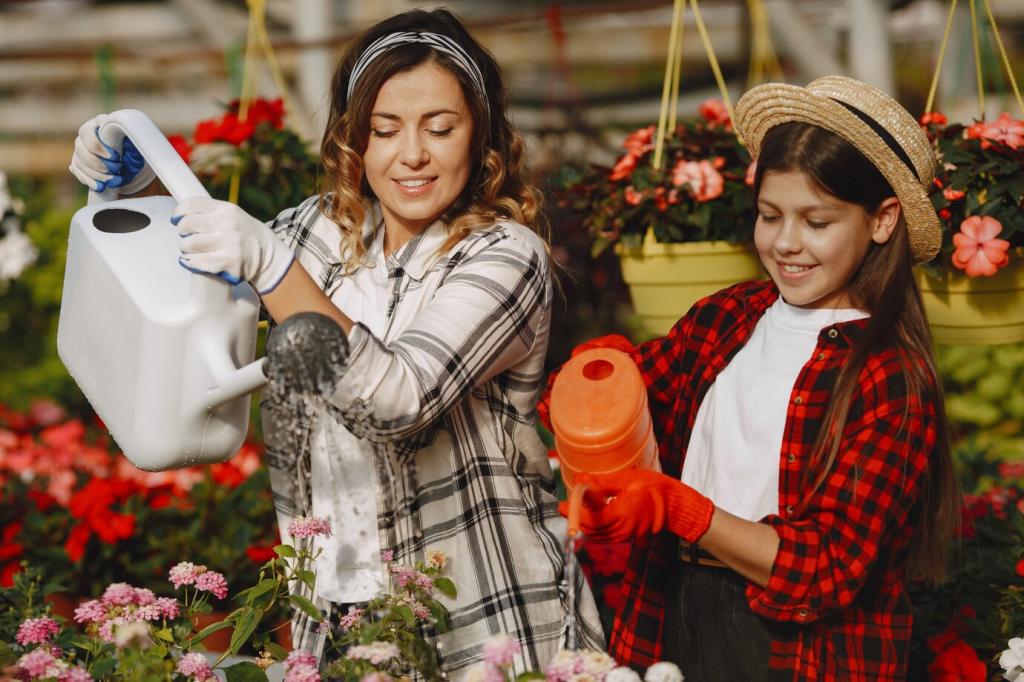Eco-Friendly Garden Design Strategies
Eco-friendly garden design is an approach that prioritizes sustainability, biodiversity, and resource efficiency. By incorporating strategies that reduce environmental impact, gardeners can create beautiful outdoor spaces that support local ecosystems and conserve natural resources. Whether starting a new garden or transforming an existing one, adopting green methods fosters healthier soil, cleaner water, and thriving wildlife. This page explores essential concepts and practical advice to design gardens in harmony with nature, providing insights to help both novice and experienced gardeners make eco-conscious decisions.

Native Plant Selection
Supporting Local Biodiversity
Incorporating native plants into your garden directly benefits local wildlife, including birds, pollinators, and beneficial insects. These plants provide familiar food sources and habitats, supporting the life cycles of many species. Native plant gardens create corridors for wildlife movement and reproduction, strengthening local ecosystems and promoting a balanced, self-sustaining environment that contributes to overall ecological resilience.
Water Conservation Benefits
Native species are well-adapted to the climate’s natural rainfall patterns and often need very little supplemental watering. By planting natives, gardeners can significantly reduce water consumption, easing the demand on municipal supplies and natural resources. This strategy not only saves money but also decreases the energy used for water transport and treatment, making your garden more environmentally friendly and economical over time.
Reducing Chemical Dependency
One of the significant ecological advantages of growing native plants is their immunity to many local pests and diseases, which lessens the need for chemical pesticides and fertilizers. This translates to a healthier garden that safer for children, pets, wildlife, and beneficial insects like bees and butterflies. By lowering chemical use, you minimize pollution runoff and protect nearby water bodies from contamination, demonstrating a commitment to responsible stewardship.
Sustainable Soil Management
Producing and applying compost is a fundamental eco-friendly strategy that recycles kitchen scraps, leaves, and yard trimmings into nutrient-rich organic matter. Composting not only reduces landfill waste but also improves soil structure, increases moisture retention, and supplies plants with a full spectrum of nutrients. Gardeners can incorporate additional organic amendments like leaf mold or worm castings for enhanced soil fertility and healthier plant growth.

Previous
Next
Water-Efficient Irrigation
Drip irrigation and soaker hoses deliver water directly to plant roots, dramatically reducing evaporation and runoff compared to overhead sprinklers. These systems are easily customized for different plantings and ensure that water is applied only where needed. By targeting root zones, they foster healthier growth, discourage weed seeds, and allow for significant water savings, making them an ideal option for eco-focused gardens of any size.
Designing areas specifically for birds and pollinators ensures that your garden plays a vital role in sustaining local populations. Planting nectar-rich flowers, berry-producing shrubs, and seed-producing grasses attracts bees, butterflies, hummingbirds, and songbirds. Safe nesting sites and seasonal resources allow these important creatures to thrive, supporting natural pollination and seed dispersal essential for ecosystem health.
Creating Wildlife Habitats
Natural Pest Control Methods
A diverse garden environment attracts natural enemies of common pests, such as ladybugs, lacewings, birds, and frogs. By growing a variety of flowers, providing shelter, and avoiding harsh chemicals, you invite these allies to keep pest populations in check. With time, your garden’s food web stabilizes, reducing the need for intervention while creating a richer ecological tapestry.

Energy-Conscious Garden Features
Solar-Powered Lighting and Equipment
Switching to solar-powered garden equipment and lighting harnesses renewable energy to keep your garden safe and functional after sunset. From string lights to water features and automatic irrigation timers, solar technologies provide reliable power without emissions. Not only does this lower your electricity bills, but it also reduces greenhouse gas output and maintains a tranquil, clean atmosphere.
Manual and Electric Tools
Choosing efficient, manual tools or electric alternatives instead of gasoline-powered equipment significantly curtails noise pollution, emissions, and fuel spills. Hand tools like pruners, hoes, or reel mowers are ideal for small spaces, while battery-powered options work well for larger gardens. This shift promotes a calmer environment and contributes to cleaner air and a smaller carbon footprint for your gardening activities.
Passive Design Strategies
Incorporating passive solar and wind strategies—such as orienting beds for sun exposure, planting windbreaks, or using light-colored mulch—maximizes natural climate control without external inputs. These features help regulate temperature, shield delicate plants, and extend growing seasons. Passive design reduces dependency on mechanical systems, leading to energy savings and a more climate-resilient garden.

Upcycled Garden Structures
Repurposing items like pallets, old bricks, or salvaged wood into raised beds, trellises, or pathways reduces consumption of new materials and gives discarded items a second life. Creative upcycling keeps costs down and adds unique character to garden spaces. The result is a garden that tells a story, blends sustainability with artistry, and demonstrates commitment to reducing your ecological footprint.
Composting Organic Waste
Home composting recycles garden trimmings, weeds, and kitchen scraps into valuable nutrients—returning organic matter to the soil while cutting back on landfill contributions. This closed-loop system enriches your garden naturally, reduces methane emissions from decomposing food waste, and saves money on fertilizers and soil amendments. Composting is a simple but transformative practice that benefits the entire ecosystem.
Responsible Disposal and Reuse
Disposing of non-compostable, non-recyclable waste properly safeguards habitats and waterways from pollution. Donating surplus plants, seeds, or pots, or sharing resources within the community keeps materials in use. When buying new products, choosing those made from recycled or sustainably harvested materials further reduces overall waste and reinforces responsible consumption patterns for a greener garden.
Join our mailing list
